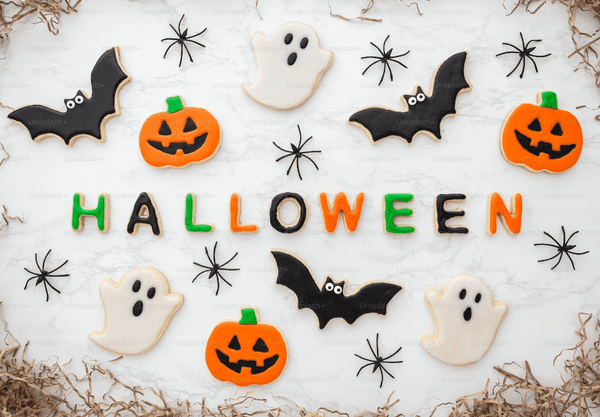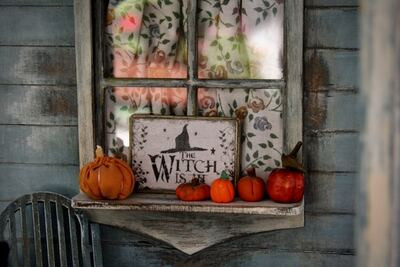5 Must-Haves for a Perfect 4th of July: Style, Food, Fun & More
5 Fascinating Facts You Didn't Know About Halloween

Halloween is a holiday celebrated all over the world. It is known for scary decorations, fun costumes, and perhaps most importantly, going door-to-door to get candy. However, how we celebrate Halloween today is just a small part of this fall festival's interesting history. While many people know the modern traditions of Halloween, there are a lot of interesting facts about where it came from and how it has changed over time. In this article, we share five fascinating facts about Halloween that you might not know. Each fact can explain the old and mystical roots of this extremely popular holiday.
The Ancient Celtic Festival of Samhain: How Halloween Origins Date Back Over 2,000 Years
Halloween had its origin over 2,000 years ago as an ancient Celtic festival called Samhain, which fell on October 31st. The Celts in Ireland, the UK, and northern France believed that on Samhain night, the boundary between the living and the dead would become blurred. In other words, it was believed that spirits could back to Earth. It is believed that this festival marked the closing of harvest and the start of winter, the time usually associated with death.
To keep away these wandering spirits, the Celts would light big fires and wear costumes, usually made from animal heads and skins, to hide from these supernatural beings. You still see the effects of Samhain in how people celebrate Halloween nowadays, especially with the love of things scary and the wearing of costumes of some type.
From Souling to Trick-or-Treating: How Halloween Evolved Beyond Candy and Costumes
Today, Halloween is mostly known for trick-or-treating, but it hasn't always been like that. Began becoming famous in the U.S. during the 1920s and 1930s trick-or-treating how we know it today. Before Halloween became what it is today, people celebrated it in different ways like "souling" and "guising." In the Middle Ages, "souling" meant that poor people would go from house to house on All Souls' Day (November 2nd) asking for food in exchange for prayers for the dead.
In Scotland and Ireland, "guising" was when kids would wear costumes and sing songs, recite poems, or tell jokes to get fruits, nuts, or money. In the middle of the 1900s, candy became the main choice for trick-or-treaters because candy companies wanted to take advantage of the increasing popularity of Halloween.
The Dark and Mysterious History of the Jack-o'-Lantern: From Irish Folklore to Halloween Icon
The famous Jack-o'-lantern comes from Irish fairy tales. Stingy Jack, a character in a story, tricked the Devil many times. He was therefore denied entry into either heaven or hell. He would have to wander the Earth with nothing but a hot coal for light. Jack utilized an emptied turnip to contain the coal and make a lamp for light. The Irish started calling this ghostly figure "Jack of the Lantern," and it later became "Jack-o'-lantern".
When Irish immigrants came to America, they found that pumpkins, which grew there, were much easier to carve than turnips. This change led to the creation of the modern Jack-o'-lantern. Today, the Jack-o'-lantern is a key symbol of Halloween, showing the scary and magical ideas that are part of the holiday.

Witches, Black Cats, and Halloween: The Historical Connection Between Spooky Symbols and the Holiday
Witches and black cats are now well-known symbols of Halloween, but their link to the holiday comes from old beliefs and fears. In the Middle Ages, people thought witches worked with the Devil and used magic to hurt others. Halloween, also called All Hallows' Eve, was believed to be a night when witches met in secret. They would hold gatherings, do rituals, cast spells, and connect with spirits. People thought witches had harmful powers, which caused a lot of fear and led to many innocent people being accused of witchcraft. This resulted in witch hunts and trials in Europe and America.
Black cats, which are often connected to witches, were thought to be their helpers—special beings that assisted witches with their magic. In specific cultures, it was felt that black cats were witches or ghosts. They thought these cats could bring bad luck to anyone who came near them. People have been scared of black cats and witches for a long time. This fear helps keep them connected to Halloween. Today, witches and black cats are considered symbols of Halloween's spooky and magical side. They represent the mysterious and magical themes that make the holiday fun.
Halloween Commercial Evolution: How It Became the Second Most Profitable Holiday in the U.S
Christmas is the holiday that makes the most money, but Halloween is not far behind. In the United States, people spend a lot of money each year on Halloween things like costumes, decorations, candy, and party supplies. Halloween became increasingly popular and profitable in the 20th century. It changed from a local celebration into a big shopping event. Halloween has become popular all over the world, with many countries taking on and changing American-style Halloween celebrations.
Stores started to see that Halloween could make their money, so they began selling themed products, fancy costumes, and decorations. Now, Halloween lasts for a whole month. Today, Halloween is a huge money-making business, with people spending lots of money on things like haunted houses, special events, Halloween decorations, and unique products. Even though Halloween started with scary traditions, it has turned into a fun and exciting time that gets more popular every year. Now, many people look forward to it as one of the best holidays.
Conclusion
Halloween is a holiday with a long history and many traditions that have changed over the years. Halloween has its origins in the old Celtic festival of Samhain and has changed over time into a day filled with costumes, candy, and shopping. It has always been a time to celebrate the mysterious and spooky things. These five interesting facts show the colorful history of Halloween and how different cultures and traditions have influenced the holiday over the years. Whether you're carving a pumpkin, dressing up like a witch, or just having fun in the spooky vibe, understanding the history of these traditions makes Halloween even more special.








